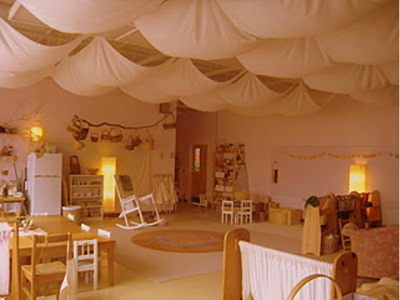It’s just too loud!

Have you ever tried to teach in a loud, echoey classroom? I have, and it left me irritable and with a headache. If you aren’t sensitive to noise, you may not pay much attention to classroom acoustics, but I can guarantee that you have students who do. I once worked in a school where teachers complained that children were getting up and leaving the room without permission. At the same time, teachers also commented that they had headaches and that their classrooms were just too loud. See a connection? So many of our students are vulnerable to noisy classrooms. Young children, children with hearing impairment, children with English as a second language or dialect, children with developmental language disorder and children with sensory challenges are all impacted by noise. Let’s also consider our own wellbeing. Having to raise your voice to be heard in a loud classroom has serious implications for our stress levels and health.
There are two key aspects of acoustics to consider:
- ambient noise
- reverberation
Both must be addressed when setting up our classrooms to support the range of learners in our classrooms.
Ambient noise is the amount of sound that exists in a classroom when there are no people. Its background sounds such as traffic, air-conditioners, fans, air purifiers, old computers, fish tanks, and the class next door; It can even be the sound made by fluorescent lights. In Australia, it is recommended that ambient noise in teaching spaces be between 35–40 decibels when unoccupied. That figure drops to below 35 decibels for students with a hearing impairment. 
Reverberation refers to the amount of time it takes for noise to ‘bounce around’ in a room. Rooms with poor reverberation may have an echo or be unpleasant to listen in. Room reverberation is impacted by the number of hard surfaces a room has, the height of the ceiling and even the placement of furniture. Australian recommendations for reverberation in classrooms is less than 0.6 seconds. That means it should take less than 0.6 of a second for a sound to bounce around your classroom.
You can measure ambient noise and reverberation quite easily through apps. Any sound analyser app on your phone will tell you how many decibels of ambient noise you have in your classroom. It’s an interesting exercise to make some notes about different noise levels with air-conditioners on and off and with windows open and closed.
There are also apps that measure the reverberation time of your classroom.
Apple - Clap reverb https://apps.apple.com/ca/app/clapreverb/id1407467855
Android – RT https://play.google.com/store/apps/details?id=com.appacoustic.rt&hl=en&gl=US
The final thing to know is that there needs to be a distinct difference between the acoustic noise in a classroom and the speaker in order for the listener to be able to hear and understand what is said. Generally, that difference is 10-15 decibels for children without a hearing impairment and 20 decibels for children with a hearing impairment. That means that if the ambient noise level in your classroom is 40 decibels, your voice needs to be at 50-55 decibels for students to be able to hear you correctly, and if you have a student with a hearing impairment, then your voice needs to be at 60 decibels. This raises serious implications for the care of teacher voices if we are working in noisy classrooms and trying to be heard.
There isn’t scope in this blog post to unpack all of the ways that you can influence these numbers in your classroom, but here are a few things I’ve found helpful in the past.
- If you have a sound field system in your classroom, use it. A Soundfield system is one where you wear a microphone, and your voice is projected around the room. It shouldn’t make it sound like a rock concert, and you really shouldn’t notice your own voice that much, but it does make a huge difference to students. One note on this though, if the reverberation is really bad in your classroom, a sound field system will make it worse.
- If the reverberation in your classroom is terrible, hang calico or other fabric from the ceiling. We did this in the classrooms of our NT School that were way outside the Australian standards for acoustics, and for just $300 per room, we successfully brought the acoustics down to within standards.

3. Have your mat area away from the air conditioner or other loud equipment. The noise just makes it harder for students to hear you.
4. Choose soft furnishing and rugs where you can. Having your curtains baffled instead of pulled straight across will make a difference.

Acoustics may or may not be something you’ve thought about in supporting your students, but ensuring good sound quality in your classroom can make a large difference to both you and your students. You can find a full list of the Australian standards for classroom acoustics at the Association of Australasian Acoustical
Consultants Guideline for Educational Facilities
Looking for professional learning for your team, done in your time and your way? Read more about The Evergreen Teacher here.

 Jocelyn Seamer Education
Jocelyn Seamer Education
1 comment
This is such a helpful post Jocelyn! Classrooms with poor acoustics are so difficult to work in - for both teachers and students. I had no idea about the tech specs and it is great to know what the recommended levels are and how to easily measure them. Thank you!
Leave a comment